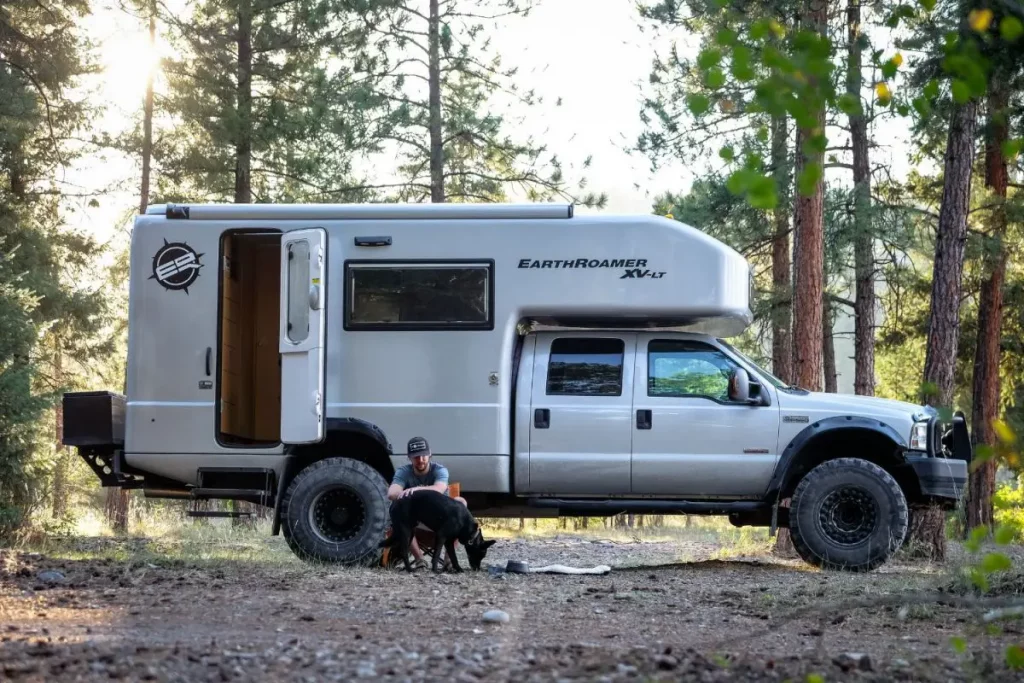Vehicles have many different weight ratings, ranging from the GVWR, GCWR, GAWR, curb weight, and payload capacity. However, two of the most popular ratings from the bunch are the Gross Vehicle Weight Rating (GVWR) and the Curb Weight, so in this article, I am hoping to help you understand what each means and what the difference between the two is, as it can be pretty important in certain circumstances.
Curb Weight differs from the Gross Vehicle Weight Rating (GVWR), as curb weight only includes what the vehicle weighs off the showroom floor. In contrast, the GVWR includes the Curb Weight, and anything you might add to the vehicle (including passengers, and cargo) after you use the vehicle.
Table of Contents
What is Curb Weight?

The curb weight of a vehicle is the weight of a vehicle as it rolls off the assembly line. This includes fluids (like gas and oil) and optioned equipment (such as heated seats, tow packages, engine choice, etc.).
While some manufacturers will give you a specific curb weight depending on the exact specifications of your vehicle, others may give you a range to account for the array of options that can be chosen. What curb weight does not include is anything added after the fact. This ranges from passengers to cargo and even aftermarket components.
While curb weight may not be something everyone needs to know, it is imperative when towing or transporting a vehicle. This will give you a good idea if a pickup can tow the vehicle without worrying about damaging the frame or the truck’s drivetrain.
What is Gross Vehicle Weight Rating (GVWR?

The Gross Vehicle Weight Rating (more commonly referred to as the GVWR) is the max weight rating of a vehicle when used. This rates the maximum weight you should load a vehicle up to whenever it is used. This includes the maximum weight in the truck bed, on the roof, the fluids, passengers, cargo, and anything else the truck can use. You should never exceed this weight rating at any time.
While the GVWR does include considerably more than many other weight ratings in its calculations, it does not have anything that is being towed behind the vehicle; that would be the Gross Combined Weight Rating (GCWR), but we’ll talk about that later.
So why should you be aware of your gross vehicle weight rating? Plenty of different activities might max out your GVWR, including Overlanding and offroading (both of which require plenty of heavy equipment), and it even ranges to when you are moving. You want to stay within the GVWR when loading up your vehicle, as it can damage your vehicle beyond repair.
Five Examples of Curb Weight vs. Gross Vehicle Weight Rating (GVWR)
To further show you precisely what I mean, I have included five different vehicles (of which all are over 6,000 pounds GVWR) so that you can see how different the two weight ratings are. Curb Weight will always be considerably lower than the Gross Vehicle Weight Rating (GVWR).
| Vehicle | GVWR (lbs) | Curb Weight (lbs) |
|---|---|---|
| Ford F-150 | 6,010 – 7,350 | 4,021 – 5,740 |
| RAM 1500 | 6,010 – 7,800 | 4,765 – 6,440 |
| Rivian R1T | 8,532 lbs | 7,148 |
| Mercedes G-Wagon | 6,945 | 5,842 – 6,315 |
| Audi RSQ8 | 6,647 | 5,490 |
What other weight ratings are there?
While the curb weight and gross vehicle weight rating are some of the most commonly used vehicle-related weight ratings, there are some others you might want to be aware of, just in case they apply to your current situation.
- Gross Combined Weight Rating (GCWR) – This is the combined weight of the vehicle and any trailer towed behind the truck, car, or SUV.
- Gross Axle Weight Rating (GAWR) – The maximum amount that can be applied to an individual axle on your vehicle. Each axle has its own set GAWR, and you should distribute the weight to account for this.
- Payload Capacity – This is the maximum amount of additional cargo and passengers to be added to a vehicle. This is generally the difference between the curb and gross vehicle weight ratings.
- Cargo Weight – This is similar to the Gross Vehicle Weight Rating we discussed earlier. However, it also includes the trailer tongue weight when towing (not the complete weight of the trailer, just the weight applied at the hitch)
Frequently Asked Questions
What does 26,000 GVWR mean?
This is the breaking point between light-duty and medium-duty trucks truck (ranging from class 1 to class 6), such as a Ford Ranger, an F-150, or up to an F-650), and more commercial-rated trucks (class 7 trucks) like the F-750 and higher. The GVWR of 26,000 pounds is a common sight when talking about pickup trucks.
How do I find my curb weight?
While you can generally find the curb weight under the hood of your vehicle, in the user manual, or even on the inside of the driver’s door jamb, you can also determine your curb weight by subtracting the payload capacity of your vehicle from the gross vehicle weight rating (GVWR).
How do I find my gross vehicle weight rating?
Your GVWR can be found in your user manual or on a plate on your vehicle’s driver’s side door jamb (around the same area as your tire pressure).
Conclusion
In the end, both the gross vehicle weight rating and the curb weight of the vehicle are essential to know if you intend to tow or load your vehicle up to the brim at any time. In case you didn’t catch it before, here is the difference!
Curb weight is the vehicle’s weight off the factory floor (including fluids and options). Meanwhile, the Gross Vehicle Weight Rating is the max rating of everything that can be added to the vehicle (including people and cargo) before you start to have issues.





